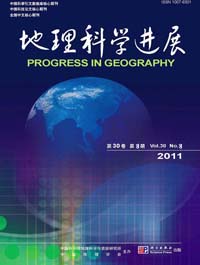Original Articles
LIUWeidong, JIN Fengjun, ZHANGWenzhong, HE Canfei, LIU Zhigao
Economic geography, the study on the location, distribution and spatial organization of economic activities, is an important subfield of the discipline of geography, and has always been playing a significant role in understanding and solving the geographical and spatial issues of economic activities. Economic geography in China was affected not only by the country's economic and institutional conditions, but also by academic thoughts and research methods from Europe, America and the former Soviet Union. Its unique trajectory forms a distinct“practice-based”characteristic, and can be summarized as“promoting the discipline through fulfilling tasks”, namely, the primary target and driving force of the discipline development are to satisfy the strategic demand of the country. At the same time, the practice tasks promoted the theoretical development. Chinese economic geographers' work is widely recognized by governments at all levels and the whole society in the country. The development of China's economic geography in recent years has the following characteristics. (1) Spatial planning at different scales is an important part of the research in economic geography (planning-oriented); (2) An increasing importance has been attached to the cross-disciplinary approach to the issue of economic geography, and to the cooperative study with other disciplines, especially with natural sciences (comprehensive guide). (3) Regional development and regional differences have become major study fields of economic geography (regionalism). (4) New techniques and simulation tools including GIS-based simulation analysis and visualization are more widely used (the application of new techniques). (5) China’s economic geographers are going out of the country and actively serve in international academic organizations (going towards“international”).
The traditional research fields of economic geography have been greatly strengthened, at the same time, some new fields emerged, some of which, such as function zoning, energy and carbon emissions, globalization and foreign trade, producer service industry, information technology and the internet, and rural area development and farmers geographic location research, have made great progress. Meanwhile, China's economic geography achieved significant progress in the areas of man-land system and regional sustainable development, new factors and new patterns of regional development, industrial cluster and industrial agglomeration, globalization, multinational corporations and foreign investment, transportation geography and spatial organization, the transformation of resource-based cities and old industrial bases, marine economic geography, and regional spatial planning approaches. Function zoning analysis is highly associated with the Major Function Oriented Zoning. Carbon emissions are a new and amazing topic which brings economic geography into a grand field of global environmental change. Globalization, finance and information technology are important emerging factors shaping China’s regional development. Economic geographers are playing a critical role in making major spatial planning. The main nation-scale territorial planning projects are Main Function Zoning, the revitalization planning for Northeast China, the development strategy of Western China, the planning for the rise of Central China, the planning for resource-exhausted cities, eco-regional development planning, and other key areas’planning, such as the Yangtze River Delta, Beijing, Tianjin, and Chengdu-Chongqing region. Based on practical research, China's economic geographers, mostly from the Chinese Academy of Sciences, provided the CPC Central Committee and State Council with a number of advisory reports and exerted a great influence on the national policy making. The new development contents, for example, the globalization of sciences, the economic (re)rise of China, and the emergence of social and environmental problems, offers huge opportunities to the development of China's economic geography. Although China's economic geography has made remarkable achievements in the past years, it is facing challenges. In addition, the academic contribution of China's economic geography to the international academic circle is relatively weak in terms of academic outputs. We suggest that China's economic geography in the coming decade needs to (1) continue to meet strategic demands of national development, and further construct economic geography with Chinese characteristics; (2) strengthen the discipline construction and improve the capacity for sustainable academic development, through constructing new cooperation platforms and personnel training, and creating an atmosphere of academic criticism; (3) strengthen the advantages of traditional research areas, explore new problems and new phenomena of economic geography, and actively participate in the discussion of major topics such as global change; (4) improve the ability to apply new techniques in simulating and visualizing economic activities, including GIS, geo-computation, spatial intelligence; (5) expand international academic exchanges through attending and hosting international conferences.
